Manitowish River Ice Road
Introduction
Text-to-speech Audio
Along the river a mile below the town of Manitowish marks a massive logging landing. During the winter, sleds moved white pine across a massive swamp to the northern bank of the Manitowish River. Logs were then unloaded and decked next to the Manitowish River to be rolled into the river in April. Rest Lake Dam provided the power for river drives by releasing its waters. Paddlers along the Manitowish River and hikers following Murray Landing Road will have no problem identifying the landing area for the ice road. Acres of dense buckthorn outline the decking area for the white pines. Along the river, buckthorn reaches off of the bank and threatens canoers and kayakers who venture too close to shore. Massive disruptions of soils from decking and driving logs created a perfect environment for invasive species like buckthorn.
It is illegal to dig or take artifacts on public lands without a permit from the DNR Archaeologist and State Archaeologist. Manitowish River Ice Road and other cultural sites like 6 Pause Portage are even more protected because they are recorded on the Wisconsin Archaeological Site Inventory. Observing, taking photos and sharing stories around the logging ice road are encouraged.
The ice road is mostly on public land and can be accessed by river or by Murray Landing Road.
Those who wish to hike the Manitowish River Ice Road on a guided tour should check the events calendar at the North Lakeland Discovery Center (NLDC). A link for the NLDC events calendar is provided below. The hike needs to be in winter and is about two miles. Snowshoes and hiking poles are often needed to navigate the swampy areas, which will be frozen, just like the historic ice road.
Images
Ice road and logging sled
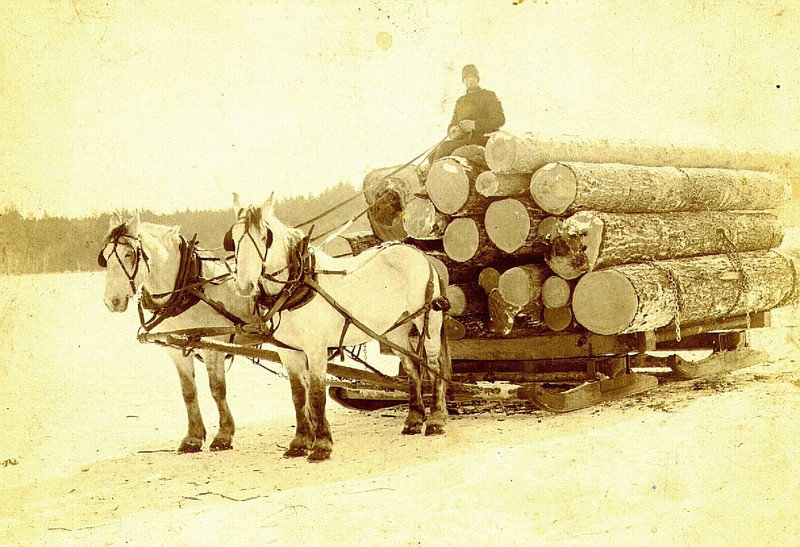
Old log landing for the ice road scene at the oxbow in the Manitowish River
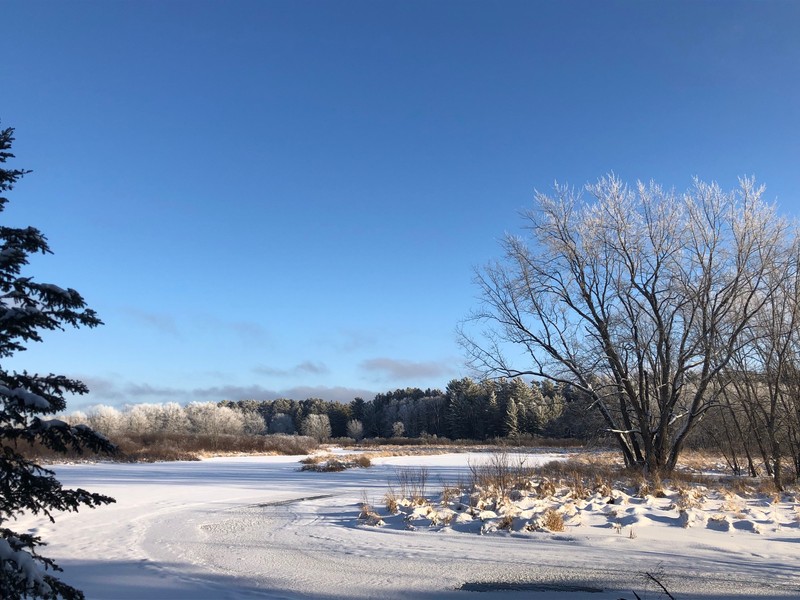
Ice rutter used to set groves for logging sled skids
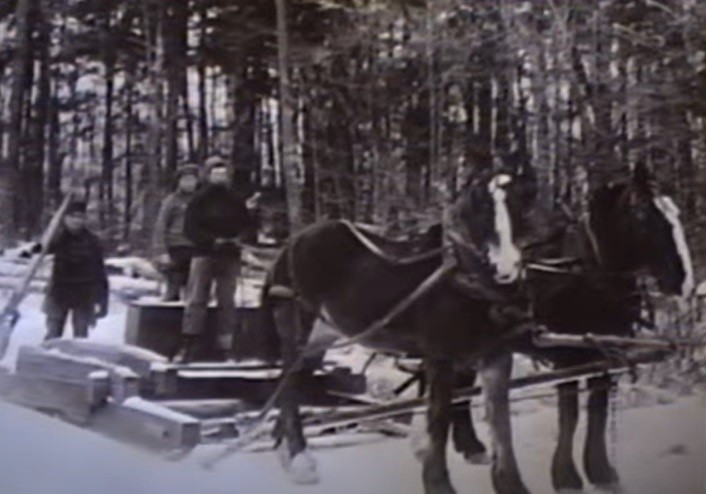
Decked logs and river drive logs in the river
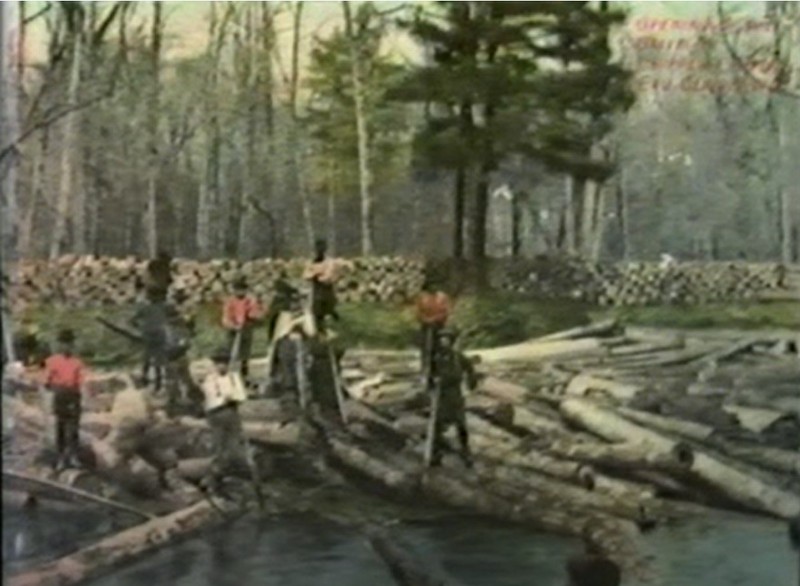
Ice road tanker being loaded
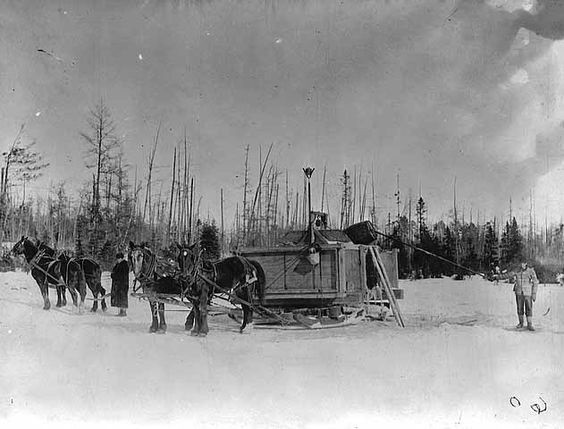
Decked white pine during winter
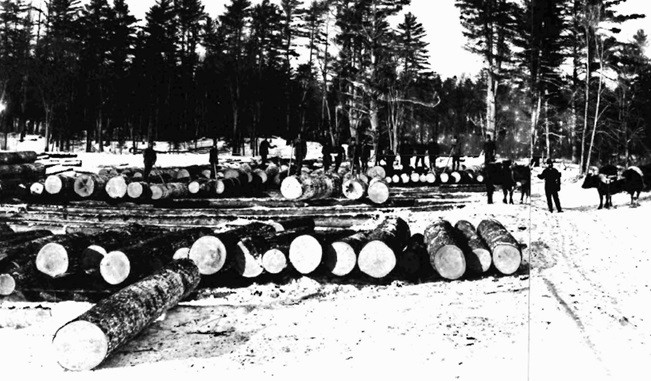
Rest Lake Dam that proved the water for log drives
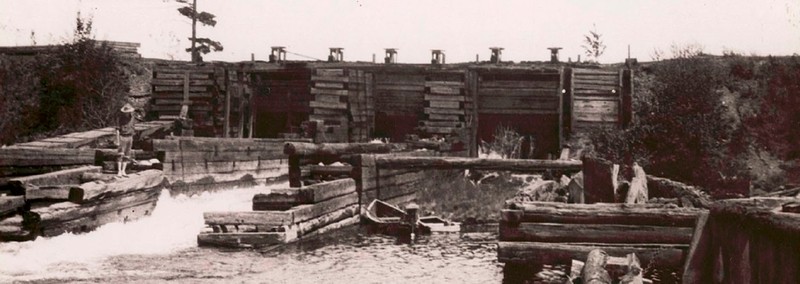
Decked logs being rolled into a river
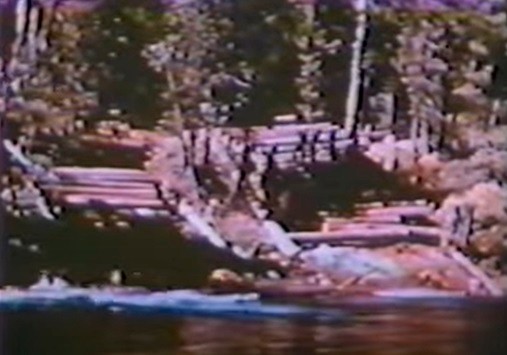
Large swamp and hummocks that the ice road spans
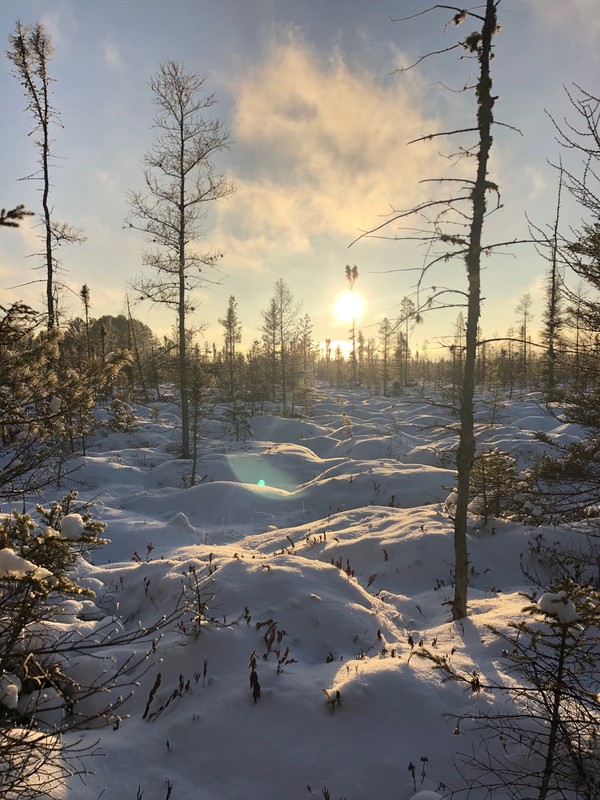
Backstory and Context
Text-to-speech Audio
For thousands of years, the Manitowish River served as a highway for transport. River drive loggers used rivers like the Manitowish to move white pines downstream to sawmills. Ultimately, the pines near rivers were exhausted, and loggers needed to reach several miles inland to harvest, transport and deck white pines along rivers. Loggers sought flat land for the heavy sleds. The lowlands around the Manitowish River were perfect for an ice road that reached north into the highlands near Mercer. Loggers would create road grades and even dig muck out of swamps to build a road grade. The sloppy road grades would firm up with cold weather and became stable for log transport preparation.
Once the ice road grade was established, sled tankers were filed with Manitowish River water, using a hoist and barrels. The wooden sled tankers poured water on the road grade when temperatures were very cold. After a few water applications, the ice roads were firm and then needed to have a rutter sled carve groves in the ice road for the logging sled runners or skids. The system worked well after every sled trip over the ice road drove the frost further into the road grade. The lowlands of the swamp and river area were flat, but when the ice road moved up hill in the highlands around Mercer, precautions were necessary. Hay or marsh grass was placed in the ruts of the ice road to add resistance on sled runners when on grades. A runaway ice sled with logs was avoided by skilled loggers.
Today, some of the ice road has been disrupted by later logging and homesteaders, but the swamp ice road grade remains as a remnant of Northwoods ingenuity from over 100 years ago.
Sources
L.E. Phillips Memorial Library. The Wisconsin Loggers: 1990 - Part 2, A Rivers and Raftsmen, January 1st, 2012. Accessed December 14th, 2022. https://www.youtube.com/watch?v=sflWiEGPqfY.
L.E. Phillips Memorial Library. The Wisconsin Loggers: 1990 - Part I, A Rivers and Raftsmen, January 1st, 2012. Accessed December 14th, 2022. https://www.youtube.com/watch?v=56PXzEjPlT4
Manitowish Waters Historical Society
Manitowish Waters Historical Society
L.E. Phillips Memorial Library. The Wisconsin Loggers: 1990 - Part I, A Rivers and Raftsmen, January 1st, 2012. Accessed December 14th, 2022. https://www.youtube.com/watch?v=56PXzEjPlT4
Unknown
Unknown
Manitowish Waters Historical Society
L.E. Phillips Memorial Library. The Wisconsin Loggers: 1990 - Part I, A Rivers and Raftsmen, January 1st, 2012. Accessed December 14th, 2022. https://www.youtube.com/watch?v=56PXzEjPlT4
Manitowish Waters Historical Society
